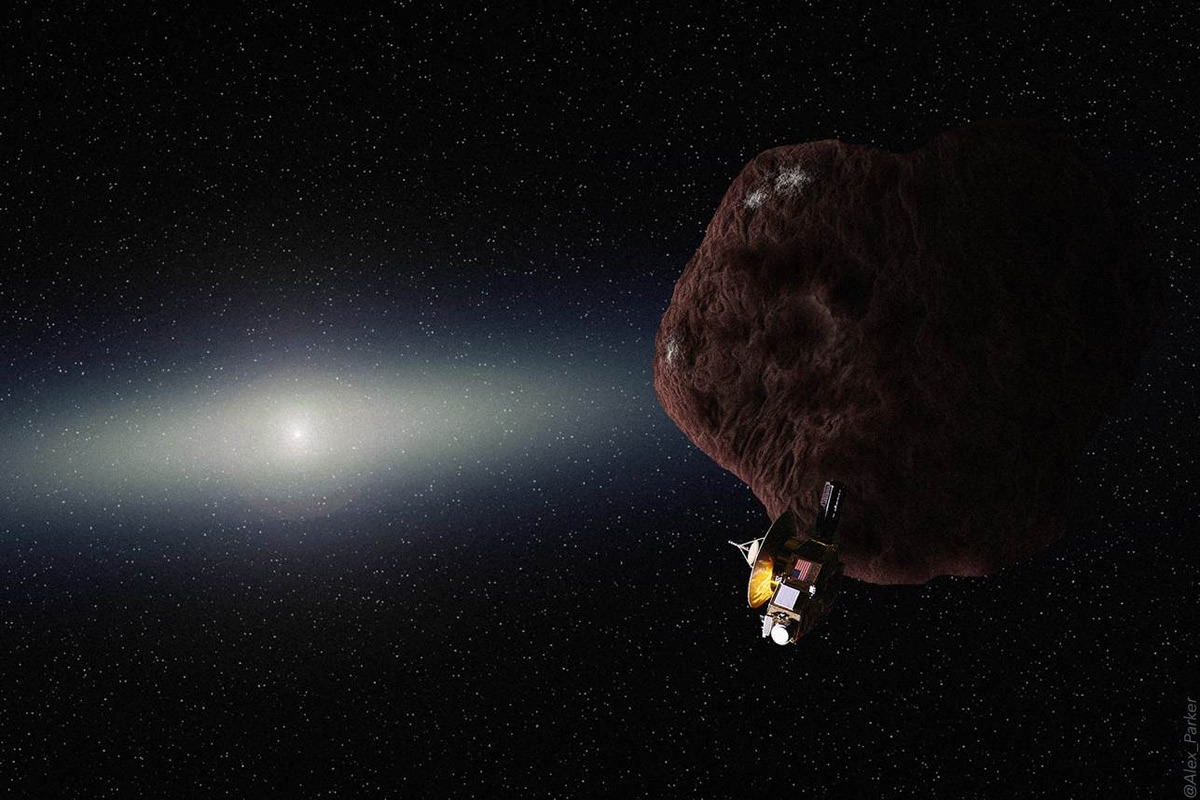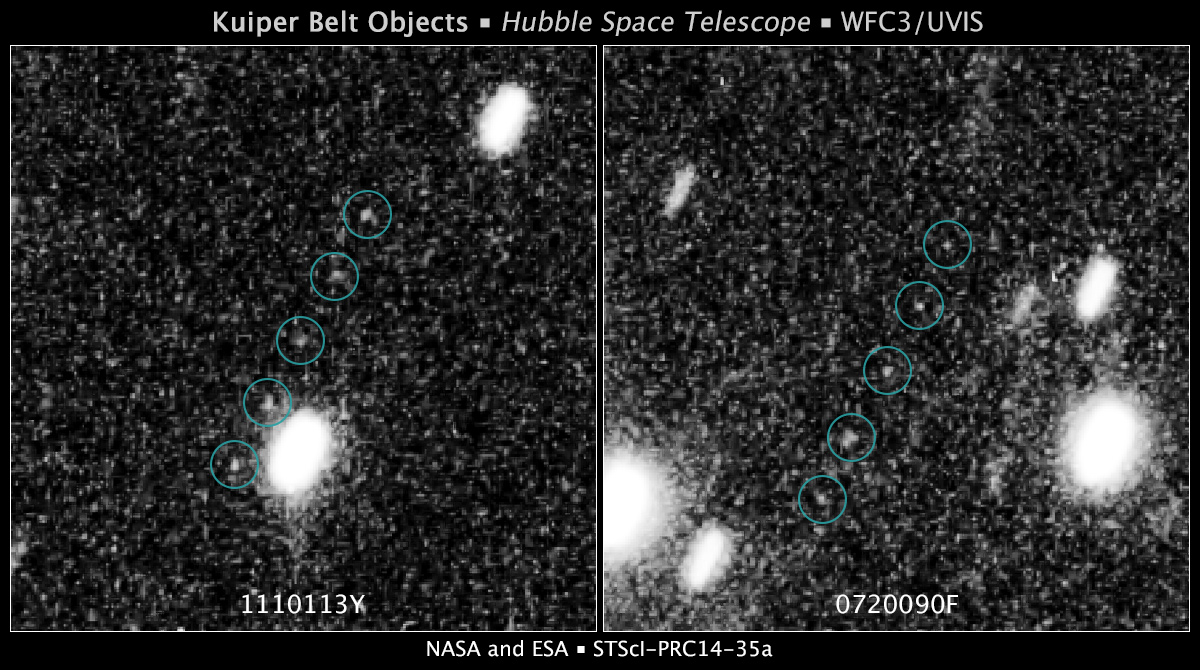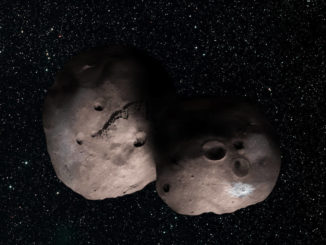
Scientists are about to decide where to send NASA’s New Horizons spacecraft next, and it is down to two candidates at the frozen frontier of the solar system to become the most distant object ever visited by a human-built space probe.
New Horizons’ flyby of Pluto was the mission’s main act, but the plutonium-powered explorer is on an irreversible high-speed course barreling outward from the planets. Scientists will decide later this month to steer the spacecraft on a trajectory toward one of two newly-discovered mini-worlds in the Kuiper Belt, a ring of icy objects thought to be leftovers from the solar system’s creation.
Scientists and NASA managers will pick between the two objects lurking in the Kuiper Belt, then prepare commands to guide New Horizons toward it for a one-shot flyby much like its encounter with Pluto last month.
Alan Stern, New Horizons’ principal investigator, told Spaceflight Now on Tuesday the decision would be announced by NASA in late August.
“The team will have to turn its attention to going back and thinking about the next possible thing that New Horizons will do in an extended mission, and there are quite a few things it can do,” Jim Green, director of NASA’s planetary science division, told reporters just before the July 14 encounter with Pluto.
Scientists have two candidates to choose from — 2014 MU69 and 2014 PN70 — discovered by the Hubble Space Telescope in 2014. Little is known about the two targets other than their locations 4 billion miles from Earth, according to Simon Porter, a scientist on the New Horizons mission from the Southwest Research Institute.
A ten-year survey for Kuiper Belt Objects past Pluto by ground-based observatories turned up 55 candidate targets, but they were all out of reach of New Horizons, which carries a finite fuel supply and is limited to steering in a narrow cone.
Pluto is currently in the constellation Sagittarius, with the brightest part of the Milky Way in the background, complicating searches for Kuiper Belt Objects, Porter said.
“It’s the stupidest possible place in the entire sky to look for a Kuiper Belt Object, but that’s where we had to go,” Porter said.
Scientists say the candidates for New Horizons’ next target appear 100,000 times dimmer than Pluto to Hubble’s imaging instruments.

New Horizons was expected to have about 35 kilograms, or about 77 pounds, of propellant left in its tank after the Pluto flyby, said Chris Hersman, a mission systems engineer at the Johns Hopkins University Applied Physics Laboratory.
That is enough for New Horizons to adjust its speed by up to 130 meters per second, or about 290 mph, according to mission managers.
Green said scientists will propose to NASA which of the two secondary targets to aim for some time in August, and Hersman said a series of rocket burns in late October or early November will steer New Horizons toward the object.
“We will set up the mission to be able to do that, but they still have to justify why it would be important to go by another Kuiper Belt Object,” Green says.
New Horizons scientists will submit a thorough proposal outlining the goals and costs of an extended mission. NASA has only committed to pay for the mission through late 2016, when the spacecraft will finish sending down the reams of data it collected during the July 14 flyby of Pluto.
NASA will put the proposal through peer review, where a board of independent scientists will determine how the New Horizons extended mission measures up against submissions from other NASA projects, such as the Curiosity Mars rover. If the proposal wins favorable marks from the review panel, NASA will likely decide to fund it.
The senior review board convenes every two years to prioritize NASA spending on long-lived robotic missions exploring other planets and observing the universe.
Scientists could also use New Horizons’ plasma instruments to monitor the solar wind at the edge of the solar system, extending measurements currently being made by NASA’s Voyager probes exploring the border between the heliosphere and interstellar space.
The high-resolution telescopic camera aboard New Horizons could also help astronomers track the motions of nearby stars by comparing their positions in the sky with views from Earth.
But most attention is on 2014 MU69 and 2014 PN70, which New Horizons would fly past in early 2019, if the mission’s second act is approved by NASA. Each object is approximately the size of Pluto’s mini-moons, roughly between 15 miles and 34 miles (25-55 kilometers) in diameter.
The object 2014 MU69 is easier to reach, requiring half the propellant needed to steer toward the other candidate target. But 2014 PN70 appears brighter and possibly larger, easing navigation on the way toward the flyby.
“This will be the most distant object ever visited by a spacecraft, and we’re not going to have a chance to do this again probably in my lifetime,” Porter said.
Email the author.
Follow Stephen Clark on Twitter: @StephenClark1.



